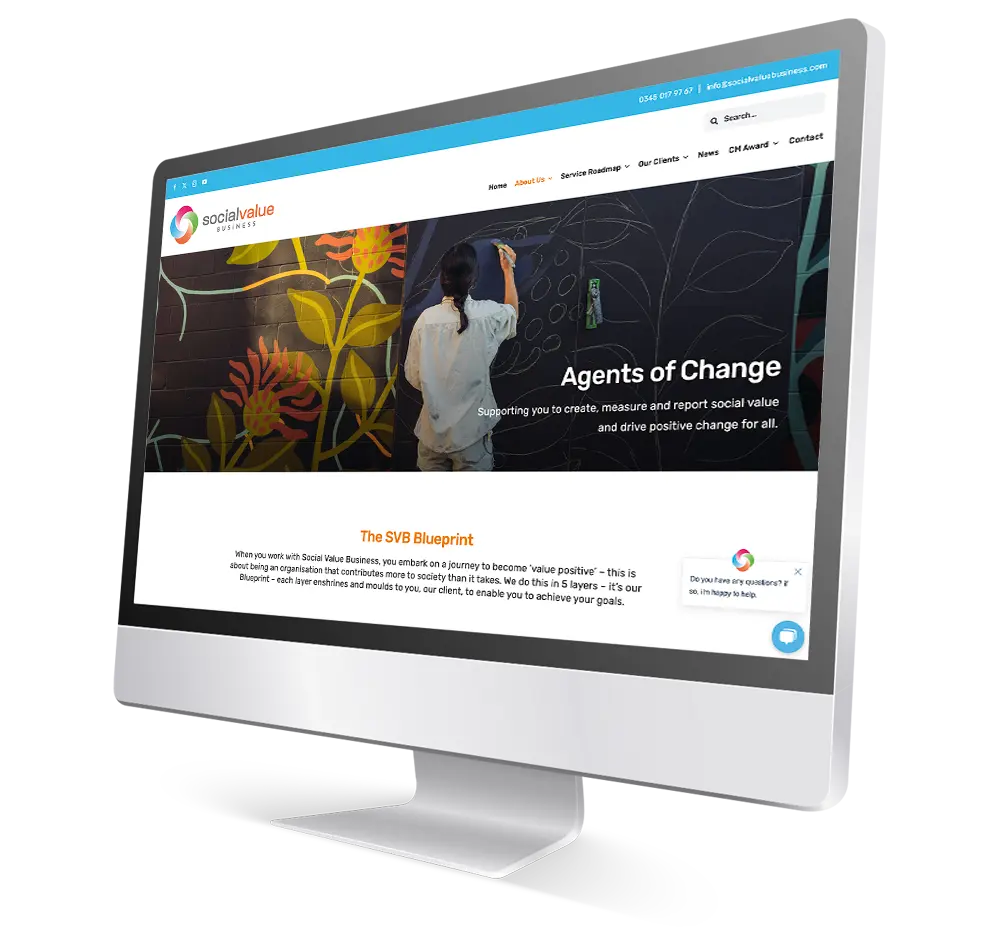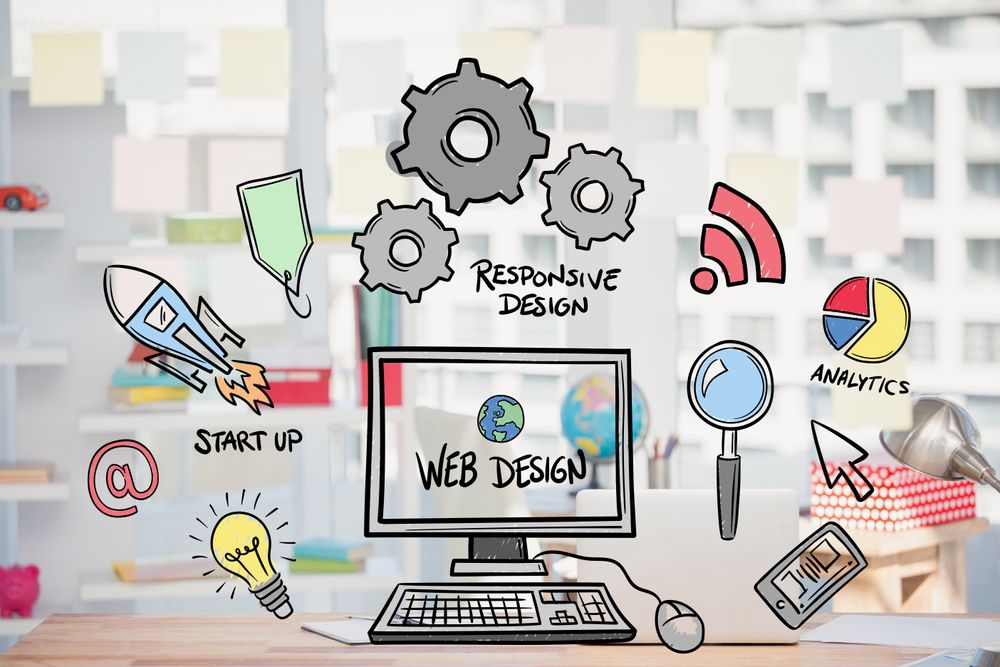The Ultimate Overview to Modern Internet Site Design Trends
In the ever-evolving digital landscape, modern website style trends play a vital role in forming individual experience and engagement. From the surge of minimal design principles that focus on simplicity to the effect of strong typography in defining brand identity, each element adds to a cohesive on the internet visibility.
Minimalist Layout Concepts
Minimalist design concepts highlight the concept that much less is a lot more, advocating for simpleness and functionality in visual interaction. This strategy strips away unneeded elements, focusing instead on vital parts that convey the designated message properly. By prioritizing clearness, minimalist design improves user experience, enabling site visitors to navigate sites easily.
Core tenets of minimal style include the usage of adequate white area, which develops a feeling of equilibrium and organization. This adverse room not just routes the visitor's focus to crucial elements however likewise cultivates a relaxing aesthetic atmosphere. Furthermore, a minimal color combination is frequently employed, using monochromatic systems or soft tones to maintain visual communication and stop frustrating the individual.
Typography plays a critical duty in minimalist style, where understandable typefaces are selected for their simplicity and efficiency in communicating content. Eventually, minimalist design principles cultivate a focused setting that motivates customers to engage with the web content, improving the total performance of contemporary site layout.
Bold Typography Options
Accepting strong typography selections has come to be a specifying characteristic of contemporary web site style, as it efficiently captures attention and conveys solid messaging. Designers are increasingly making use of typography not just as a practical component yet as a vital aesthetic component that boosts the total visual and customer experience.

Furthermore, the juxtaposition of bold typography with minimalist design principles enables striking contrasts, boosting readability while keeping visual allure. The use of whitespace around vibrant message further emphasizes its significance, guaranteeing that the message resonates with the audience.
As digital landscapes end up being more competitive, leveraging bold typography makes it possible for brands to distinguish themselves and leave a long lasting impact. The mindful option of font styles and their application can stimulate emotions, develop tone, and drive activity, making vibrant typography an essential device in modern web site design. Eventually, it is an effective means to improve narration and make certain that crucial messages are not just seen yet also felt.
Mobile-first and responsive Layout
Responsive and mobile-first style has actually become a critical principle in contemporary website growth, reflecting the enhancing dependence on smart phones for accessing online content. As user actions shifts towards mobile browsing, developers must prioritize developing experiences that adapt perfectly across various screen sizes and resolutions.
A receptive design makes sure that an internet site immediately adjusts its layout, images, and capability based on the gadget being utilized. Mobile-first design supporters for establishing internet sites initially for smaller displays, consequently scaling up to larger display screens.
Carrying out responsive and mobile-first concepts not just satisfies user preferences yet additionally lines up with seo (SEO) practices. Significant online search engine, like Google, focus on mobile-friendly websites in their positions, making it critical for companies to embrace these design approaches. In a competitive digital landscape, embracing responsive and mobile-first layout is not simply an alternative; it is important for guaranteeing ease of access and involvement with a varied target market.
Engaging Microinteractions
Microinteractions play a crucial role in boosting individual involvement and total web site experience, specifically in the context of responsive and mobile-first layout. These subtle style components read here provide immediate comments to individuals, making communications extra intuitive and pleasurable. Instances include button computer animations, notification notifies, and loading indications, which not only guide individuals but additionally create a sense of link with the user interface.
Incorporating interesting microinteractions can dramatically boost use by reducing cognitive lots. When customers receive acoustic or visual feedback upon carrying out actions, such as clicking a switch or sending a form, they really feel extra positive in their options. This fosters a smoother navigating experience, inevitably boosting customer retention.

As web site style fads proceed to advance, the importance of microinteractions can not be overemphasized. They work as the refined yet effective touchpoints that change common communications into amazing experiences, consequently boosting the overall performance of modern website design.
Sustainable Website Design Practices
Lasting website design practices are coming to be significantly crucial as the digital landscape expands and environmental concerns rise. Designers and developers are acknowledging their responsibility to develop websites that not only offer user needs but additionally lessen environmental effect. This method incorporates a number of vital approaches.
First of all, optimizing power intake is vital. Websites ought to be created to fill quickly and successfully, which lowers web server energy use and boosts user experience. Strategies such as image compression, reducing HTTP requests, and utilizing contemporary coding practices add substantially to this important site objective.
Second of all, choosing eco-friendly holding companies is crucial - website design. Many holding firms are currently powered by renewable resource sources, allowing internet sites to run in an extra sustainable manner. This choice shows a dedication to minimizing site here carbon impacts
In addition, adopting a minimalist style can enhance sustainability. Fewer aspects on a page lead to less data transfer, which not only speeds up packing times however likewise conserves sources.
Lastly, advertising digital access ensures that websites reach a bigger target market without unneeded bloat, lining up individual experience with environmental obligation. By integrating these lasting practices, web developers can add positively to both customer interaction and the planet's wellness.
Final Thought
In summary, contemporary site style trends stress the integration of minimalist concepts, strong typography, and responsive design to enhance customer experience. Embracing these patterns is important for developing impactful digital experiences that reverberate with individuals in a significantly competitive on the internet landscape.
In the ever-evolving electronic landscape, modern internet site layout trends play an important duty in shaping customer experience and engagement. By focusing on quality, minimal style enhances individual experience, allowing visitors to navigate internet sites effortlessly.
Inevitably, minimal style concepts grow a concentrated setting that motivates individuals to involve with the web content, enhancing the overall effectiveness of contemporary internet site layout.Microinteractions play an essential duty in improving individual interaction and total website experience, especially in the context of mobile-first and responsive layout.In summary, contemporary internet site design patterns highlight the combination of minimal concepts, strong typography, and responsive layout to enhance individual experience.